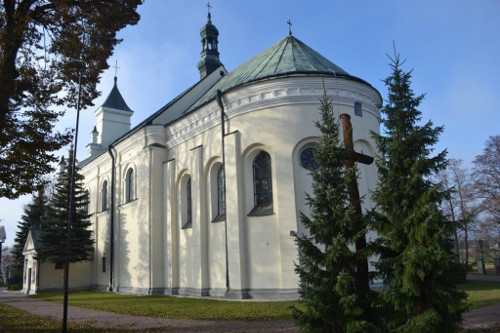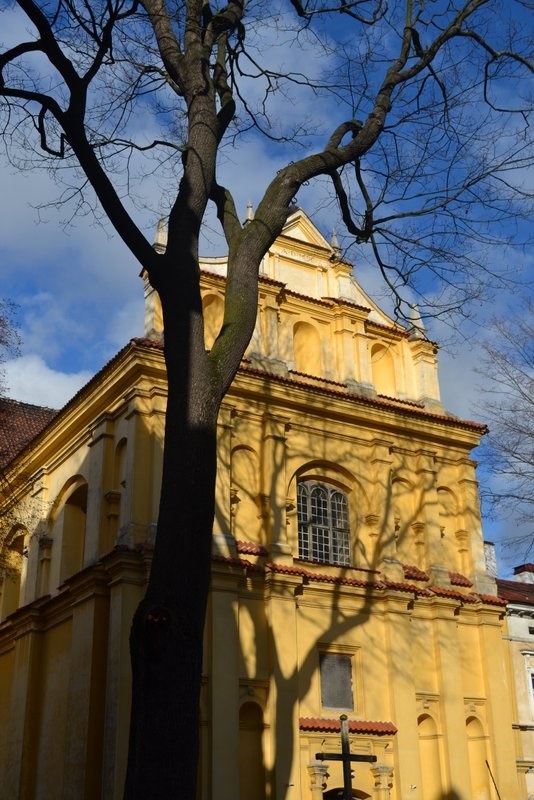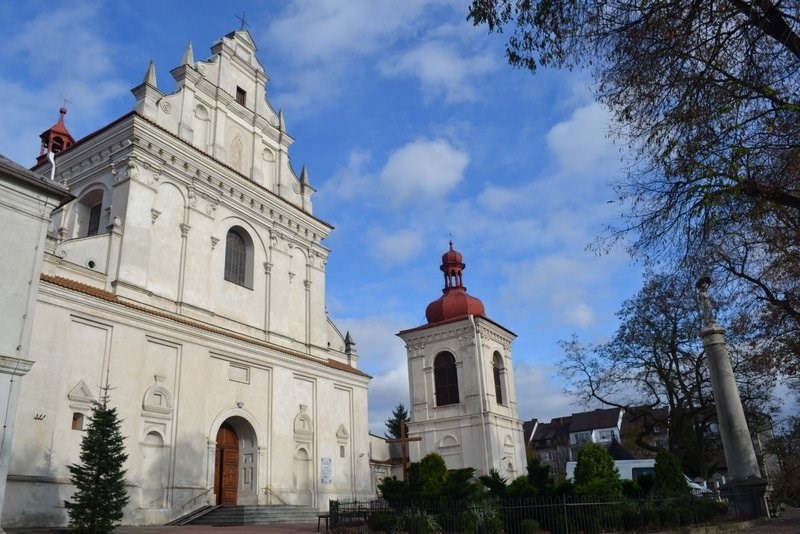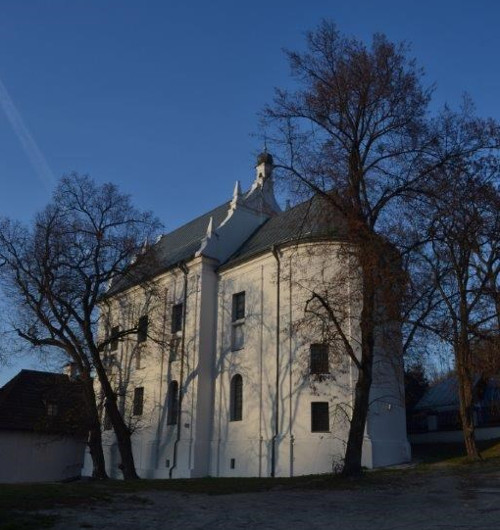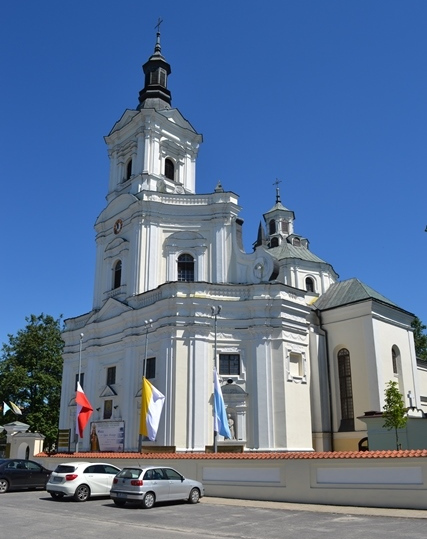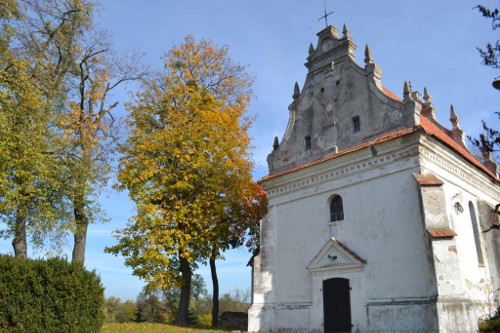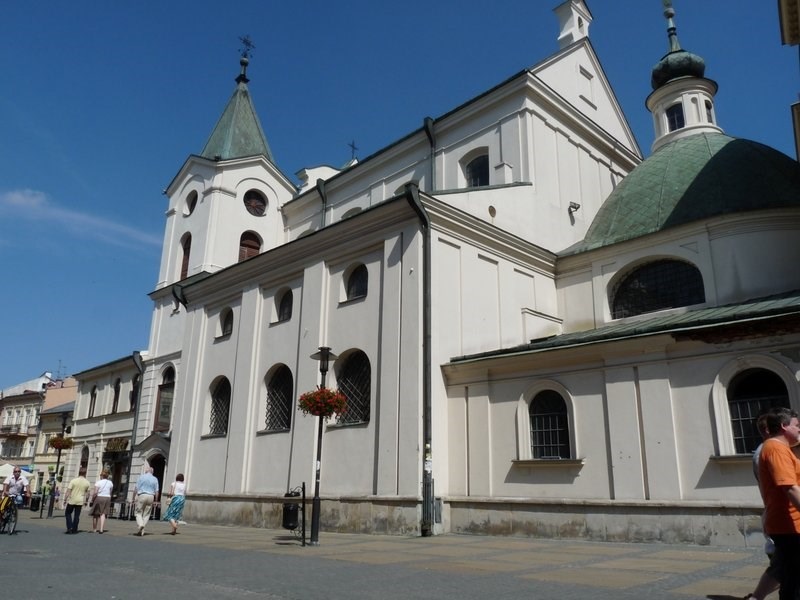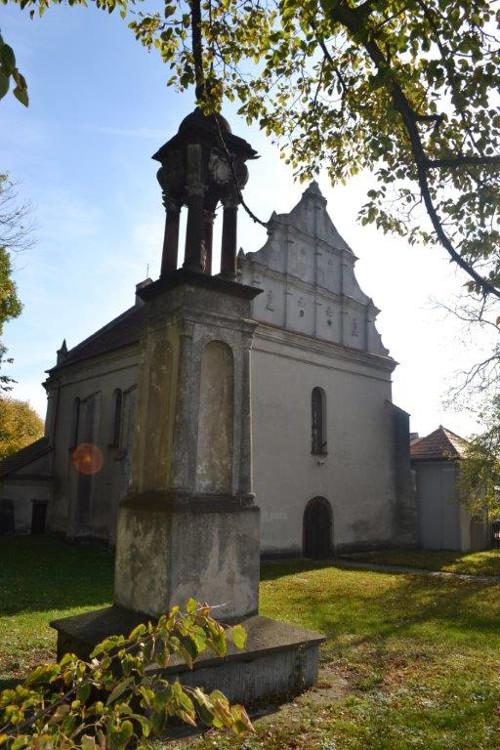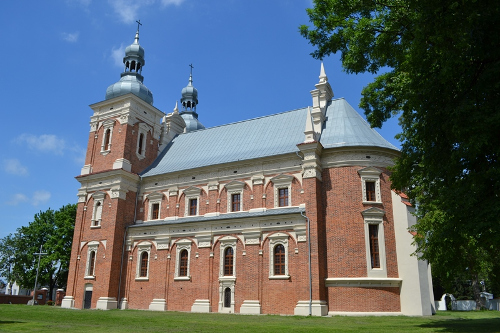Szlak Renesansu Lubelskiego

Originally a Gothic temple that served as a Calvinist church in the mid-XVI century. When in 1654 it became a Roman Catholic church, it was rebuilt in the Lublin Renaissance style. The added chancel ending in a semicircular apse was decorated with a console frieze and had a vault covered with stucco ornaments. The church tower was erected at the end of the XVII century. In 1822 the church burnt down and was rebuilt in the years 1855–1857. ...

In the mid-17th c. Mikołaj Daniłłowicz and his wife Zofia nèe Tęczyńska initiated the construction of the second convent for the Carmelite Sisters in Lublin and of the Church of the Immaculate Conception of Our Lady. However, a shortage of funds delayed the building process and it was not until the beginning of the 18th c. that the church was finished, owing to financial support from Elżbieta Sieniawska, and consecrated in 1721. ...

The church was erected for the Augustinian Order in the first half of the 17th century at the Lviv Route. After the destruction associated with the Swedish invasions, it was rebuilt in the second half of the 17th century. ...

The wooden church of the Holy Spirit that stood here in the XVI century was rebuilt in the years 1635–1671 in the Lublin Renaissance style. Modelled on the parish church in Kazimierz, it is a brick building with one nave, a narrower chancel ending in an apse, gables decorated with pilasters, and crowned with pinnacles and stucco ornaments on the vault. The XVIII century high altar has a painting depicting St. Anne with the Virgin Mary and Jesus. Wooden side altars date back to the XVII century. The chancel arch is adorned with a beautiful Renaissance polychrome. The building located next t ...

The basilica in Kodeń was endowed by the Prince Mikołaj Sapieha and built in the first half of the 17th century. The design of the church is attributed to the renowned architect, Jan Cangerle. Inside the church, there are stupendous stucco-works representing Lublin Renaissance and ornamenting the vaults of the chapels, presbytery and the aisle. The baroque facade dates back to the beginning of the 18th century. ...

The church was built at the beginning of the XVII century on the site of a 16th-century wooden St. Anne’s chapel. The consecration of the church was held in 1613. ...

The church was erected around the year 1530 thanks to the foundation of the Górka family. In the years 1620-1623 the church was extensively renovated and it obtained the features typical of the Lublin Renaissance. The works were supervised by the eminent architect, Jan Wolff and endowed by the landowner Tomasz Zamoyski. ...

Przylegający do Ratusza miejskiego kościół pw. Świętego Ducha jest jedną z najstarszych lubelskich świątyń. Został zbudowany w latach 1419-1421 z fundacji lubelskich mieszczan. Kościół sąsiadował z istniejącym tam wówczas szpitalem dla ubogich starców, kalek i nieuleczalnie chorych. Od zachodu do kościoła przylega przebudowany w XIX w. budynek, będący pozostałością przykościelnego szpitala. ...

The church was erected in the years 1608–1609 on the site of a destroyed wooden chapel of St. Stanislaus (16th–17th c.). It was designed by Piotr Durie, a Lublin architect of Italian origin, and founded by Gertruda Firlej nėe Opalińska, wife of the Crown treasurer Jan Firlej. The founding of the church is commemorated with a Latin inscription on the plaque displayed on the Renaissance southern portico. Despite being damaged by several fires, the church has preserved its original look. The gable of the church has a Lublin Renaissance division into pilasters and cornices. Inside there is a ...

The church was erected in the years 1628 – 1638 and is a magnificent example of Mannerism. It is a single-aisle building, with a semicircular presbytery. The two towers in the front part of the church were built in the mid-XIX century. The ornamentation of the grand portal refers to the Pinczów school, which was largely influenced by the artistic activity of Santi Gucci. The red, exposed, non-plastered brick walls are contrasting with the white colour of the ferrule ornaments, which can be attributed to the profound Netherlandian influence. The vaults of the aisle and the presbytery are dec ...
Page 2 of 5




